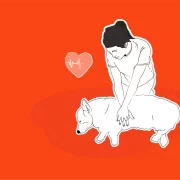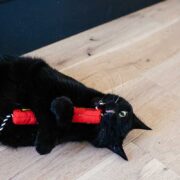While it may be counterintuitive to some people, dogs are pretty much never too young to start training and learning to respond to their owners.
Even young puppies, like human babies, are taking in their surroundings and learning from them; teaching a dog to respond to their name, for example, can and should begin as soon as they come home.
There are some commands, however, that owners should not teach their young puppies, in the same way that parents should not teach their elementary schoolers algebra before they know basic mathematics. Some of these are commands that young dogs may not be intellectually ready to learn, especially without a strong foundation in the basic commands that all dogs need to be well-behaved and manageable.
There are also commands that require physical actions that puppies are not capable of safely performing before their bodies have fully developed.
Of course, most dogs are so eager to please their owners that this will not stop them from trying. Pet parents should be aware of how these tricks and cues might hurt their young pups; that way they can refrain from teaching these skills until the dog has physically developed enough to be able to perform them without the risk of injury.
So we asked Robert Thomas from Marvelous Dogs, a dog trainer of over 20 years, what commands a puppy should not be taught. Below are his top five to avoid!

5 Commands to Never Teach a Puppy
1. “Sit pretty”
Depending on who you ask, this trick can mean one of two things. Similar to “beg,” sitting pretty can involve your dog sitting up on their haunches with their front paws in their air. It can also be your dog spinning a little as they get into a sitting position.
Either way, this is not a good trick for your growing puppy to learn. This is not because it is terribly complicated to teach, but because it is physically strenuous in ways a puppy’s developing body cannot tolerate.
Sitting pretty puts a strain on your dog’s back legs that will negatively affect the way your puppy grows and develops. Dogs taught to sit pretty while very young may develop back or joint problems later in their lives.
A good rule of thumb is not to teach your dog this trick until they are at least a year old, at which point their growth plates will have fused, and they should be able to sit pretty without any damaging side effects.
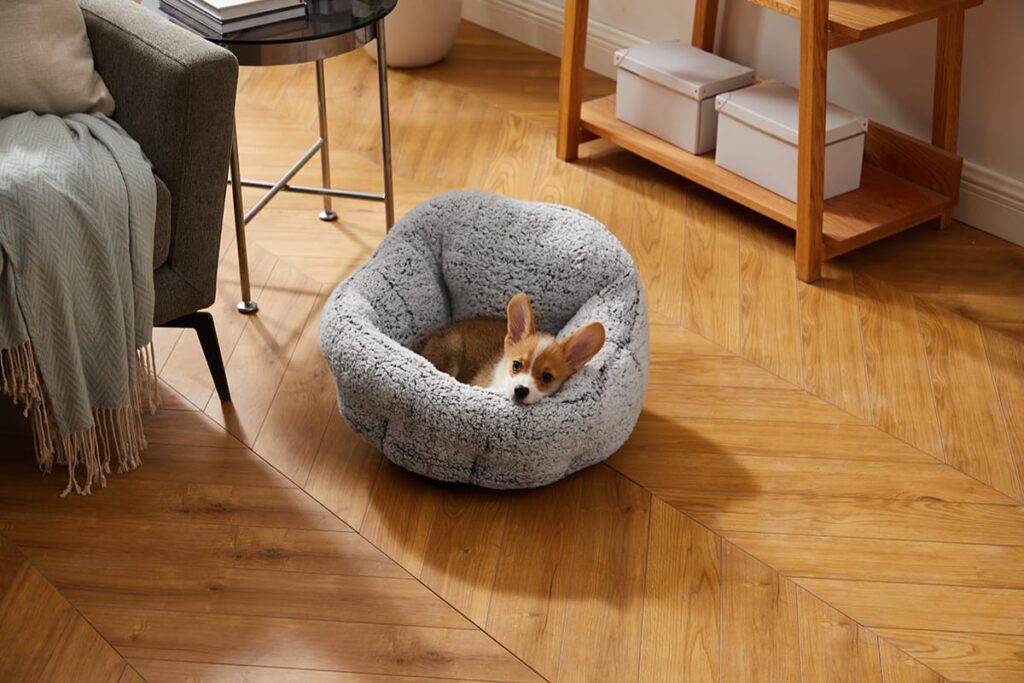
2. “Jump” or “Up”
This is another trick that messes with your puppy’s body, specifically their growth plates. Growth plates are the places on a dog’s skeleton where its bones grow and develop.
In puppyhood, growth plates are soft, flexible, and prone to damage; by the time a pup is about 12 months old, their growth plates are usually fully fused and sturdier than they were when the dog was younger.
Landing from large jumps on flexible growth plates can be extremely damaging to your dog’s skeletal system and long-term growth. Even if you are planning on raising an agility all-star, there are ways to help your puppy develop agility skills that do not involve the dangers of jumping as a young dog.
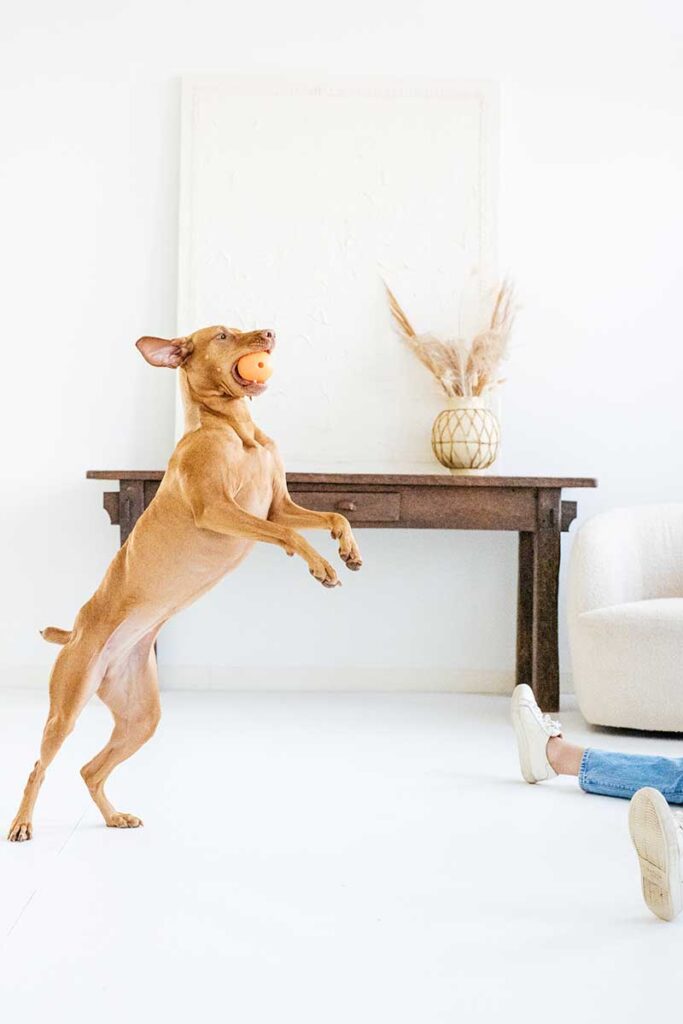
3. “Dance” or “Stand tall”
At the risk of sounding like a broken record, this is another trick that can be damaging to a young dog’s growth plates and joints.
Standing on their hind legs, even for a brief period of time and with human support while “dancing,” puts an unnecessary strain on a growing dog’s skeletal and muscular system.
Remember that your puppy still has not fully developed all of the muscles they will have as an adult dog, and cannot perform athletically the way they will be able to when they are a year or a year and a half old.
Asking your pup to perform these physically difficult tricks is like asking a kindergartener to compete on a high school basketball team. Even if they can dribble the ball, they are not physically developed enough to succeed in that environment. Give it some time.
4. “Wait”
This command is obviously not damaging to a pup’s body, any more than sitting down and walking are, but it can be confusing for a young dog still in the midst of learning sit and especially stay.
“Stay” and “wait” are very similar in what they are asking of a dog – one asks the dog to remain where they are regardless of what their person is doing, while the other teaches them to focus on their owner and sit until they receive a release command.
Training both at the same time can, unsurprisingly, be confusing and overwhelming for a young puppy.
Additionally, “wait” involves a lot of skills that can be especially difficult for a youngster, like focus and self-control. You will have more success training this cue if you wait until your dog is a little bit older and has completely mastered things like “stay” and crate training.
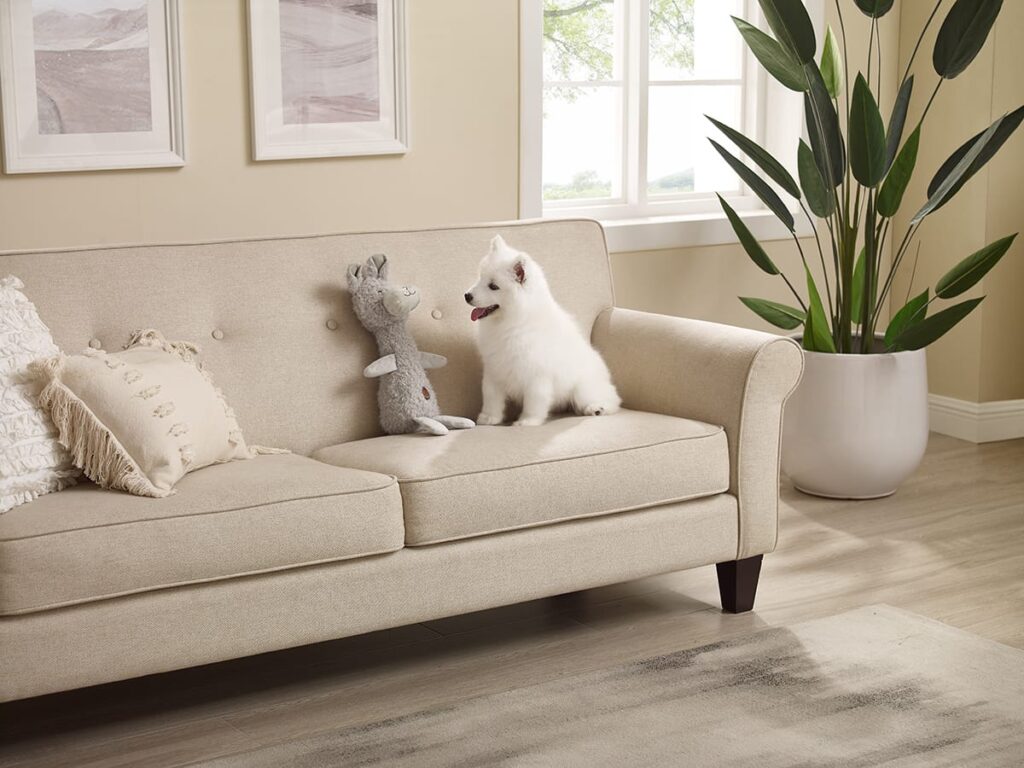
5. “Put your feet on mine”
This is a slightly more unusual trick, but an adorable one that involves your dog sliding under your legs and putting their front paws on your feet, even as you move around.
It is a sweet trick, but one you probably should not work on with your dog until they are physically fully grown, or close to it. This is because this trick is difficult for small puppies who cannot reach properly, and also because it involves your dog having an understanding of their own proportions.
There is no point in your dog developing a sense of moving their feet along with yours, only to grow twice as tall overnight and no longer have a sense of even how to move their feet to walk, let alone in sync with yours.

Safety Is the Priority
Puppy training really should start as soon as your dog comes home, and it is never too early to start teaching important cues like sit and stay. Some cues, though, should wait until your dog is a little bit older, to make sure they are mentally ready and physically capable of performing them safely and properly.
